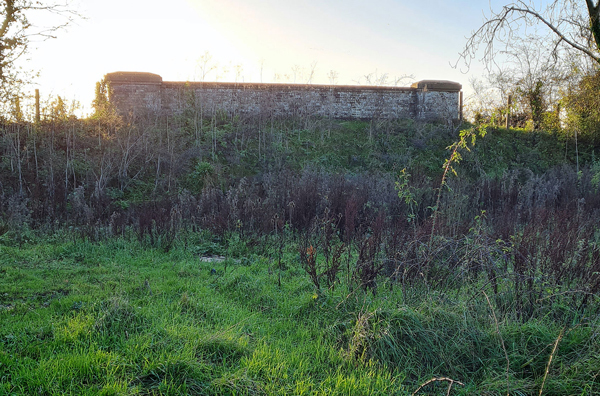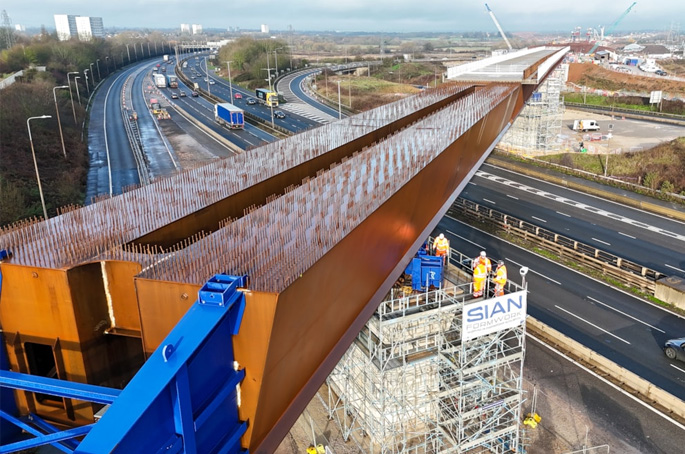National Highways' strategy of using emergency powers to infill historic railway structures is ‘unravelling', campaigners have said, after a third council told it to seek planning permission, without which it may have to remove the infill.
The government-owned company manages 3,100 structures within the Historic Railways Estate (HRE) on behalf of the Department for Transport.
It has been criticised by campaigners for its approach to managing structures which has often involved infill works, sometimes blocking routes that could be used for active travel.
It has now admitted that it assumed that work carried out on a bridge in Norfolk ‘to prevent an emergency' arising could remain permanently without planning permission.
In fact, the rules around ‘permitted development' make clear that any works carried out under what is known as Class Q must be removed after 12 months, unless the local planning authority agrees otherwise.
National Highways has also said that its assessment that infilling was the most cost-effective solution was based on an assumption that it would remain permanently.
The company has already been given a deadline of October to remove 1,600 tonnes of infill from a bridge at Great Musgrave, Cumbria after Eden District Council rejected a planning application for its retention.
In addition, Selby District Council is expecting the submission of a retrospective planning application this week relating to the infilling of a structure near Tadcaster.
Both schemes were carried out under Class Q ‘permitted development' rights.

King's Lynn and West Norfolk Borough Council has now told National Highways that it is in breach of planning rules in relation to infill works at Congham bridge (pictured) as 12 months have passed and the land has not been restored to its original condition.
The works are regarded as ‘unauthorised' and the company has been asked to apply for planning permission.
In October 2019, National Highways' consultants, Jacobs, told the council that Congham bridge represented ‘an ongoing and increasing risk to public safety' and was proposed for infilling under permitted development rights.
The works began in March 2021 and were completed the following month.
The head of the HRE programme, Hélène Rossiter, said: ‘Before carrying out the work we consulted with both of the relevant local planning authorities, which confirmed they had no objections or comments relating to the schemes.
‘We infilled Congham Road Bridge in February 2021 because we viewed it as a public safety risk.'
Asked by Highways what its intention was regarding planning permission when infilling was carried out, a National Highways spokesperson said: ‘Our intention was to retain the work permanently. We sought to rely on our Permitted Development rights under Class Q, which allows the retention of such work without the need to apply for planning permission.
‘We had written to the council advising them of the work being undertaken and received no objections. This was interpreted as approval by the council, and that we could retain the infill under our Permitted Development rights.'
National Highways was also asked whether it took into account the fact that Class Q development rights only last 12 months when it assessed that infilling was the most cost-effective option.
A spokesperson said that as the council did not object to the permanent infilling of the bridge National Highways had assumed that it would remain permanently.
The spokesperson added that for the same reason, National Highways had not calculated the costs of removing the infill and adopting an alternative solution.
The spokesperson added: ‘In conclusion, based on the information we had at the time, we determined that infilling was cost effective, expedient and in the public interest. A position that we still stand by today.'
Graeme Bickerdike - from the HRE Group, which campaigns on the issue - said that National Highways had used the same permitted development rights to infill at least six structures with three local authorities asking for retrospective planning applications and another having ‘vigorously opposed the work from the outset'.
In many cases, councils had pushed back because no evidence was provided to support the claims and most of the affected structures have since disappeared from the company's works programme without any interventions, HRE said.
Mr Bickerdike added: ‘The strategy was intended to avoid the difficulties that come with public scrutiny, but that's clearly unravelling. These rights were never appropriate for permanent works to structures that were fundamentally fine. Permitted development empowered National Highways to impose its preferred method of managing these assets.'
A National Highways spokesperson told Highways: ‘We refute in the strongest terms any insinuation that there were willing breaches of statutory obligations.'

























